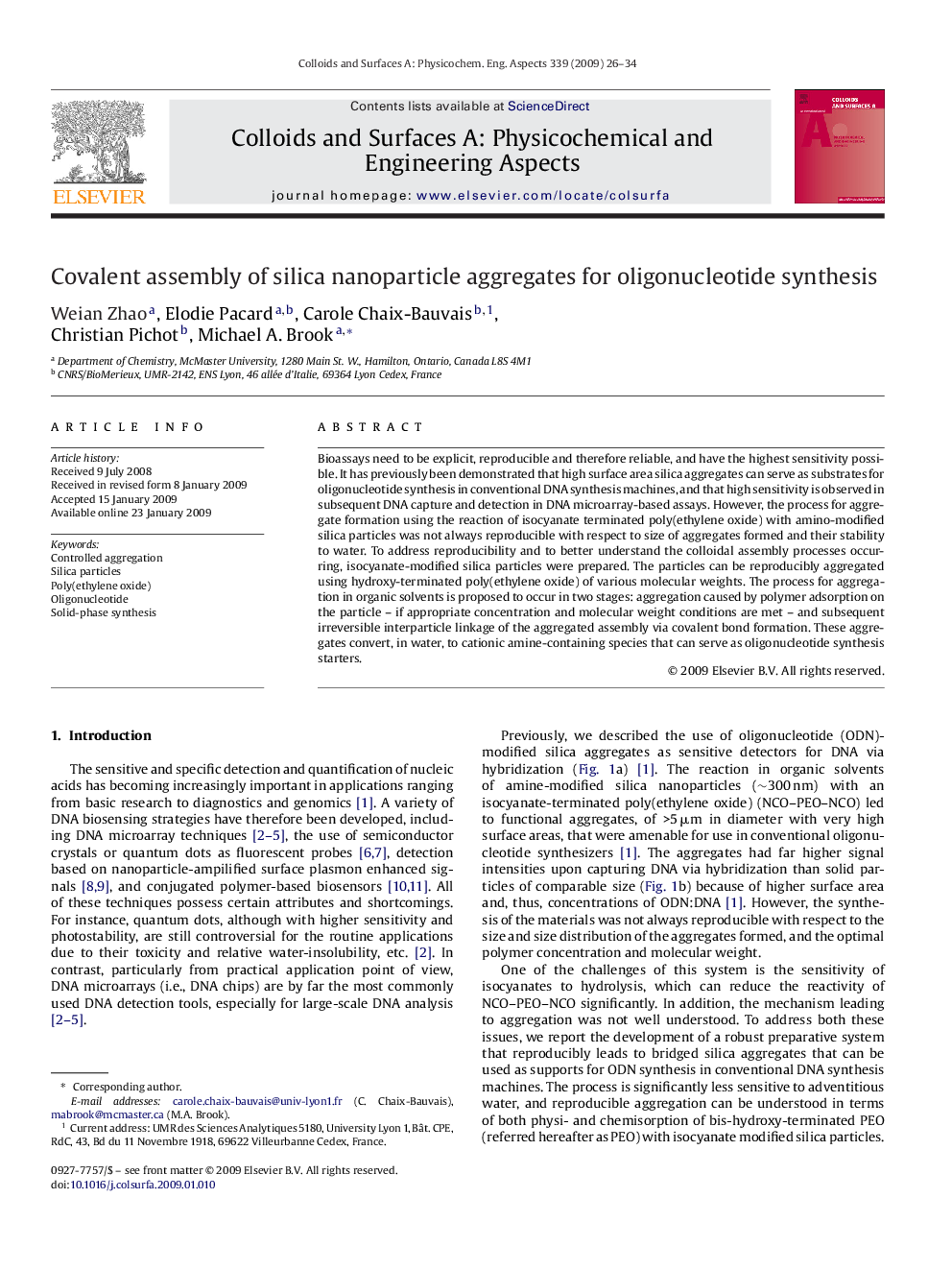| Article ID | Journal | Published Year | Pages | File Type |
|---|---|---|---|---|
| 596135 | Colloids and Surfaces A: Physicochemical and Engineering Aspects | 2009 | 9 Pages |
Bioassays need to be explicit, reproducible and therefore reliable, and have the highest sensitivity possible. It has previously been demonstrated that high surface area silica aggregates can serve as substrates for oligonucleotide synthesis in conventional DNA synthesis machines, and that high sensitivity is observed in subsequent DNA capture and detection in DNA microarray-based assays. However, the process for aggregate formation using the reaction of isocyanate terminated poly(ethylene oxide) with amino-modified silica particles was not always reproducible with respect to size of aggregates formed and their stability to water. To address reproducibility and to better understand the colloidal assembly processes occurring, isocyanate-modified silica particles were prepared. The particles can be reproducibly aggregated using hydroxy-terminated poly(ethylene oxide) of various molecular weights. The process for aggregation in organic solvents is proposed to occur in two stages: aggregation caused by polymer adsorption on the particle – if appropriate concentration and molecular weight conditions are met – and subsequent irreversible interparticle linkage of the aggregated assembly via covalent bond formation. These aggregates convert, in water, to cationic amine-containing species that can serve as oligonucleotide synthesis starters.
Graphical abstractIsocyanate-modified silica nanoparticles can be covalently assembled in organic solvent to aggregates in a controlled fashion using poly(ethylene oxide) with an appropriate molecular weight and/or concentration. The resultant aggregates, on hydrolysis, can be used as high surface area support for oligonucleotide synthesis and highly sensitive DNA detection.Figure optionsDownload full-size imageDownload as PowerPoint slide
